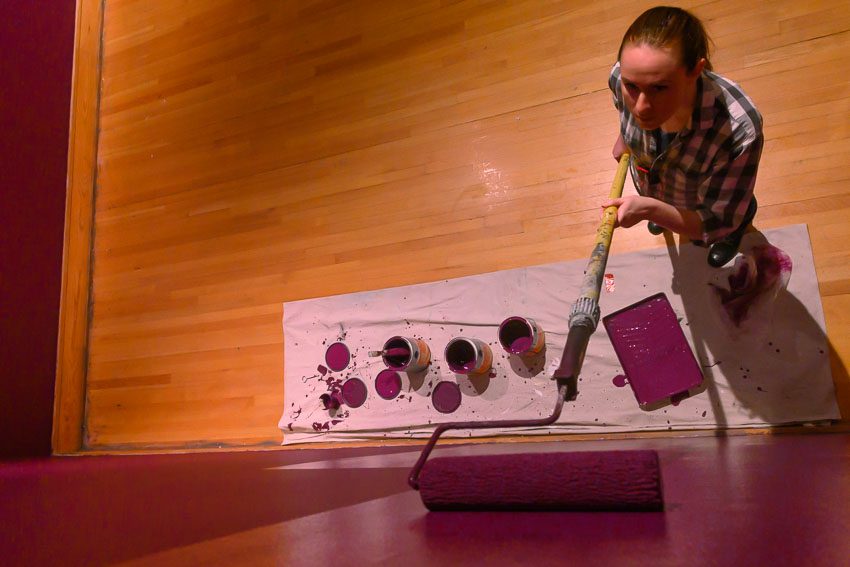To continue our series on measuring, marking, and layout skills, we wanted to tackle calculating square footage. Learning how to calculate square footage is a necessary skill. It’s imperative when buying sod for your yard, ordering gravel for your driveway, or picking up paint for your walls. For example, when buying carpeting, you have to get it right or you risk wasting a lot of money or time. You don’t want to either buy more than you need or run out of materials mid-project. This is crucial since getting items from two different lots often yields slightly different colors.
Every contractor, DIYer, and weekend warrior needs to know basic workshop math. This can really save you time, money, and material in the long run.
Table of Contents
The Basics of How to Calculate Square Footage
Calculating square footage is easy if you only have to deal with rectangles. Simply multiply the length times the width. In the real world, however, not everything comes with right angles. Still, let’s start with the basics.
A standard sheet of plywood measures 32 sq ft. We get that by multiplying 8-feet x 4-feet. An 8-foot tall wall measuring 10-feet long is 80 sq ft. Simple right? A 12-foot wide, 80-foot long driveway equates to 960 sq ft.
Summary: Calculating square footage is easy. Usually, you multiply length times width. The real world is often not that easy, though.
A Real-World Example at the Polk Museum of Art
Now let’s take a real-world example at the Polk Museum of Art in Lakeland, FL. We are considering getting bids to replace our hardwood floors. I need to calculate the square footage of all of our galleries. Some are easy like the small rectangular gallery below. In this case, I convert to inches and then multiply the two numbers together. In this case, it gives me 191.23 square feet. Alternatively, I can convert the inches portion of the measurement to a decimal representation of feet. Some of the best laser distance measures can do this for you.
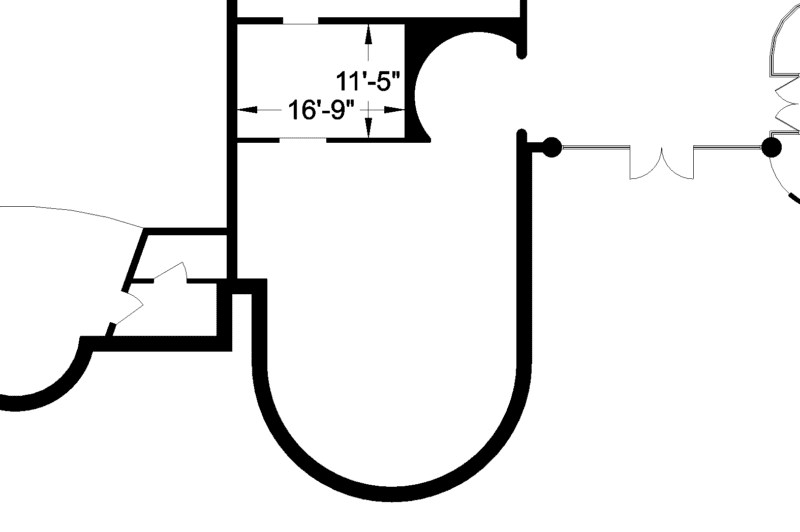
To manually multiply two measurements together with feet and inches, you have to convert them both to the same measurement. It is easiest to convert them to inches. Let’s take the above case with 11′-5″ multiplied by 16′-9″. First, take 11 feet x 12 = 132 inches. Add the remaining 5 inches to get 137 inches. Next take 16 feet x 12 = 196 inches. Add the remaining 9 inches to get 201 inches.
Now you can multiply 201″ X 137″ = 27,537 square inches. Anytime you have a measurement in square inches and want to convert it to square feet, divide it by 144. In this case, 27,537 square inches ÷ 144 = 191.23 square feet… exactly what the construction calculator said it should be.
How to Save Time by Using a Construction Calculator
By far the easiest way to multiply feet and inches together is to use a construction calculator or get a constitution calculator app on your phone (Apple | Android). Unlike a regular calculator, construction calculators let you input both feet and inches when making calculations. They make easy work out of many tasks like calculating rafters, stair layouts, board feet, concrete volume, slope & grade, metric conversions, and much more.
I use mine as the default calculator for my phone, and I keep a physical construction calculator beside my workbench and on my tool cart at work. I love mine as much as any tool I own!
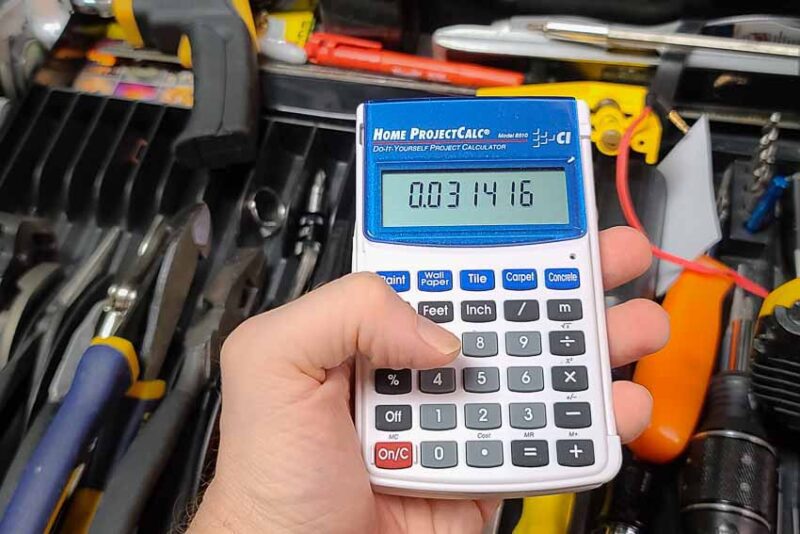
Tip: Anytime you have a measurement in square inches and want to convert it to square feet, divide it by 144.
Converting Square Footage to Yards
Sometimes you run into situations where things are measured in yards. (You “metric people” can feel free to roast us Americans in the comment section all you want, but it won’t change anything). All the math above works exactly the same. A driveway 50-yards long and 12-yards wide is 600-yards because 50 x 12 = 600.
A football field is 120 yards long by 160 feet wide if you include the end zones. When doing math with two different units of measurement (feet and yards in this case), you need to do a conversion. If we take 160 (feet) and divide it by 3, that tells us the width of the football field in yards.
160 ÷ 3 = 53.33 yards. Next, we can simply multiply 120 x 53.33. Do that, and you get ~6,400 square yards of football field. The approximation comes from the fact that 160 ÷ 3 is not really 53.33 yards but actually 53.333333… When estimating, getting close works perfectly because you typically want to add 10% on top anyway to cover waste.
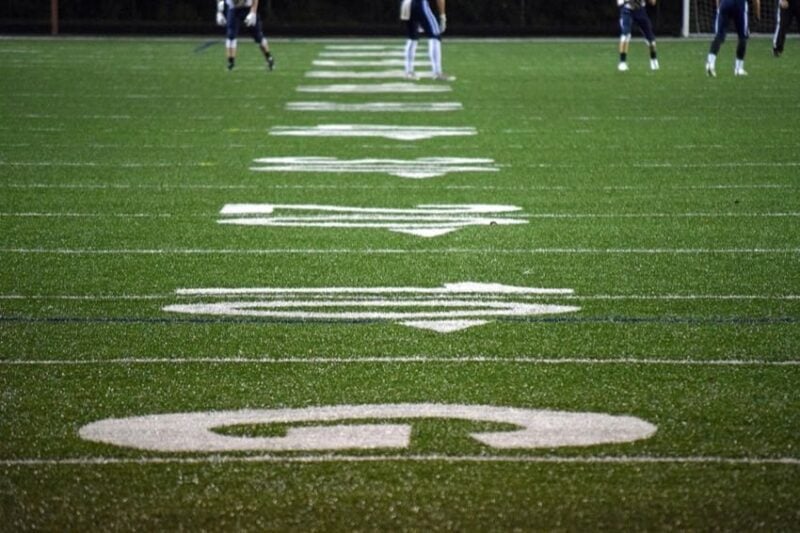
What if your boss then changes his or her mind (as they are known to do)? They now say they want to know the football field in square feet. You can redo the math by multiplying 120 x 3 which gives you 360 feet. Then, take 360 and multiply it by 160 feet to get 57,600 square feet (incidentally, that’s about 1.32 acres).
Dividing by 9
Let’s go back to the 57,600 square feet football field example. Now I need to convert it to square yards. You don’t need to redo the math. Just take 57,600 and divide by 9. So 57,600 ÷ 9 = 6,400 square yards.
Sound familiar?
This also means the opposite holds true. If you know you have 6,400 square yards and need to convert that to square feet, just multiply by 9. In this case, 6,400 x 9 = 57,600 square feet.
Summary: If you know the square footage and need the square yardage, divide by 9. Know the square yardage? Multiply by 9 to find the square footage.
How to Deal with Circles When Calculating Square Footage
Let’s go back to the floorplan of the Polk Museum of Art. Below the small gallery is an oddly shaped, much larger gallery. It features two circular areas but no actual circles. How would we calculate this? We could always guess, but what if you are in a situation where the materials you are pricing are extremely expensive? You may be wasting hundreds, thousands, or even tens of thousands of dollars.
You do much better actually taking the time to do the math. Large projects would waste millions of dollars if they guessed instead of accurately calculating the square footage of materials needed.
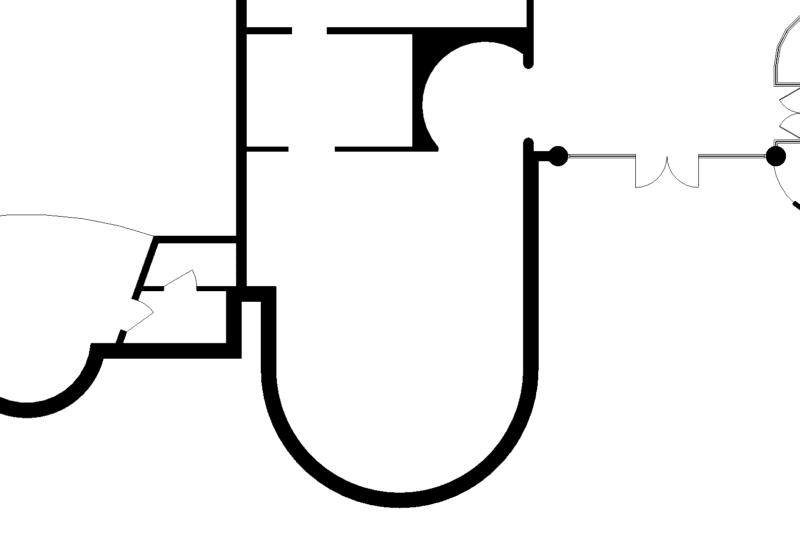
To calculate the shape of a complex room, you simply need to break it down into basic shapes. To start, let’s tackle the curve on the bottom.
Area = πr2
To find the area of a circle just member πr2. Pi equals (approximately) 3.14. You multiply that times the radius (r) squared. When you square a number you multiply it by itself.
Taking the floorplan of the Museum. I measured the walls and found they were 25-feet apart. In my head, I imagine a circle in the gallery space with a 25-foot diameter. To find the radius, divide by 2. That gives you 12′-6″.
According to the formula, I square this, in other words, multiply 12′-6″ times 12′-6″ which is 156.25 square feet. I then multiply this times π (pi or 3.14) which is 490.6 square feet. This gives me the square foot for the entire circle below.
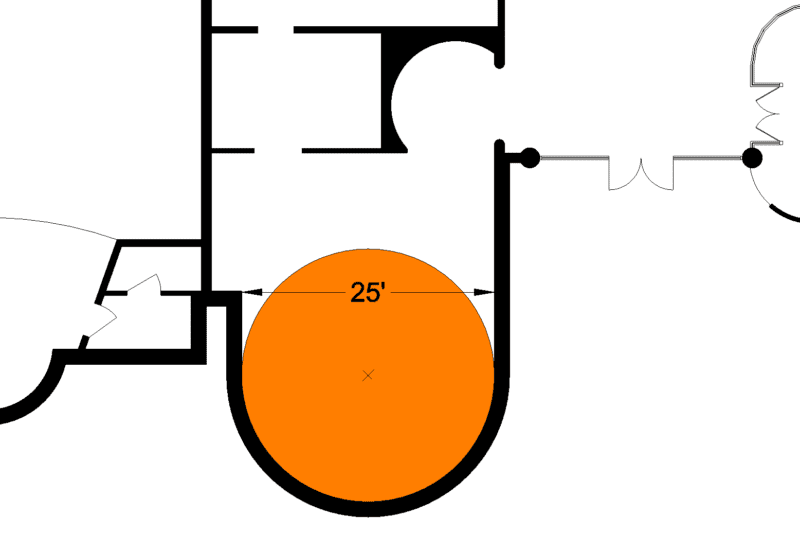
However, I don’t need the area of the full circle—just half. Dividing 490.6 square feet by 2, I get the arc below. This gives me 245.3 square feet. I now know the orange area.
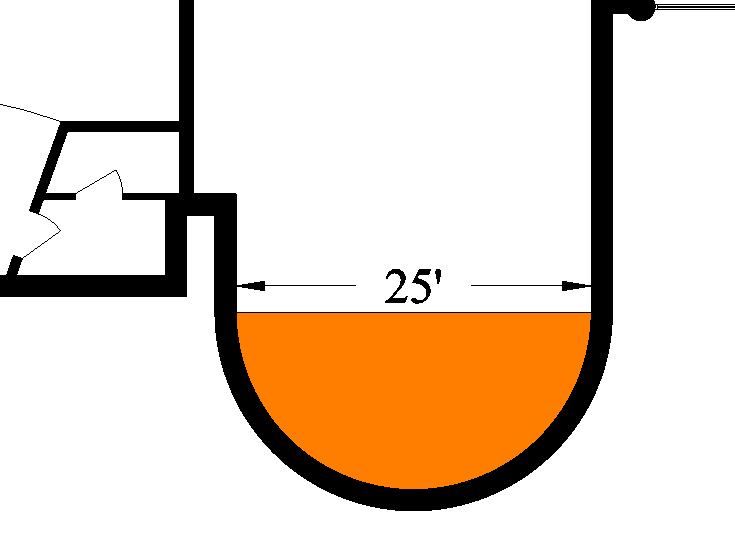
Continue Using Shapes to Calculate the Total Square Footage
I continue by dividing the remainder of the room into two additional rectangles. Calculating the square footage of each of the smaller rectangles is easy now. This gives me 382.7 square feet in the green area and 208.3 square feet in the blue area.
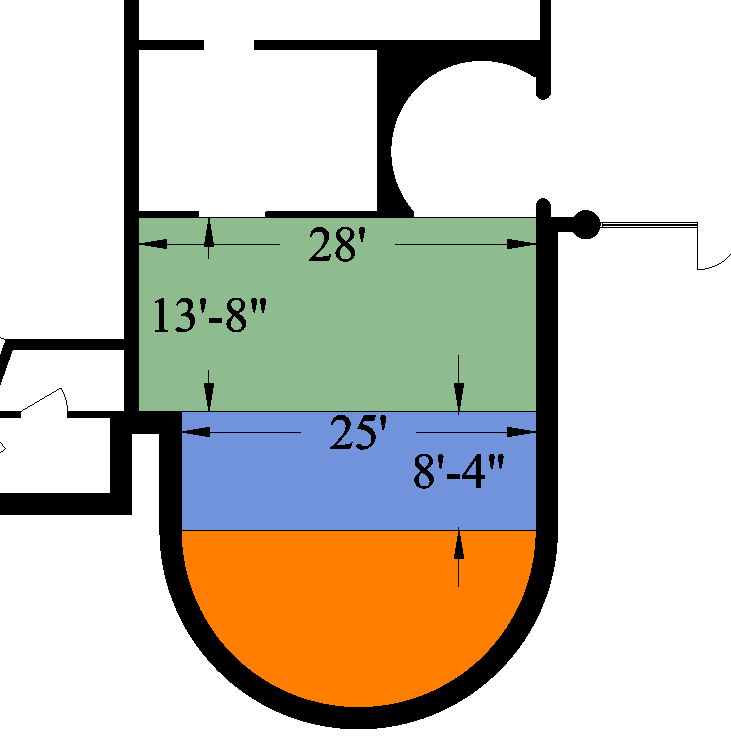
And now we come to the tricky part. If the cost of materials you are estimating is not too expensive, treat the gallery entryway as a rectangle instead of a circular. In this case that gives us 112.75 square feet. You can then add all then separate measurements together to find the square footage of the gallery, or at least “close enough for government work”. If however, you need to know the EXACT square footage to odd shapes like this, nothing beats a computer.
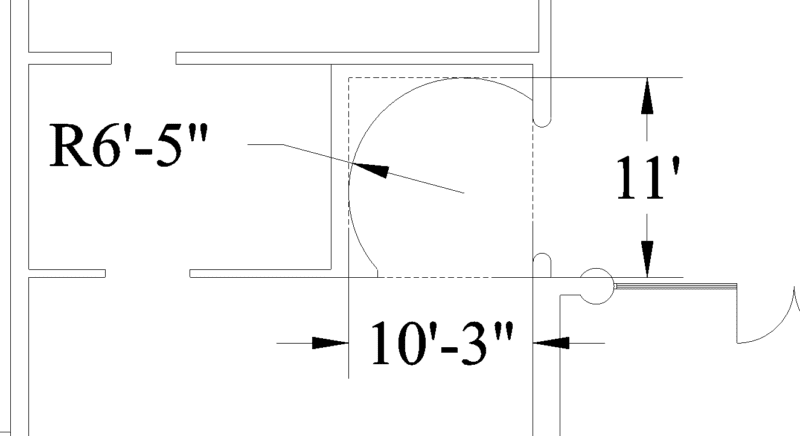
How to Calculate Square Footage Using CAD
For the ultimate accuracy and efficiency in calculating square footage, use CAD software. CAD stands for Computer-Aided Design (or “Drafting” if you grew up in the 80s). Why calculate the square footage of complex shapes when the computer can just tell you? Of course, you need to know how to ask.
Available CAD Software Options
Programs like AutoCAD serve as the industry standard for mechanical and architectural design. These programs can even calculate and render 2D and 3D shapes. AutoCAD is EXTREMELY expensive at over $1,800 a year. This is why I prefer the much more affordable TurboCAD Professional which “only” costs $1,000 as a one-time purchase. It also works with AutoCAD DWG files. AutoCAD Lite and TurboCAD Deluxe are stripped-down versions of the programs that are still extremely capable. They start at around $300.
2D and 3D Design Capabilities
Once you get your hands on the architectural plans of a building in CAD form, you can turn on and off different layers. That lets you show and hide plumbing, electrical, HVAC, etc, and also zoom in to the exact spots your crew will be working on. It also makes calculating/estimating materials go from an art form to a science. You can literally count every board and sheet of plywood needed and predetermine your desired overage amounts.
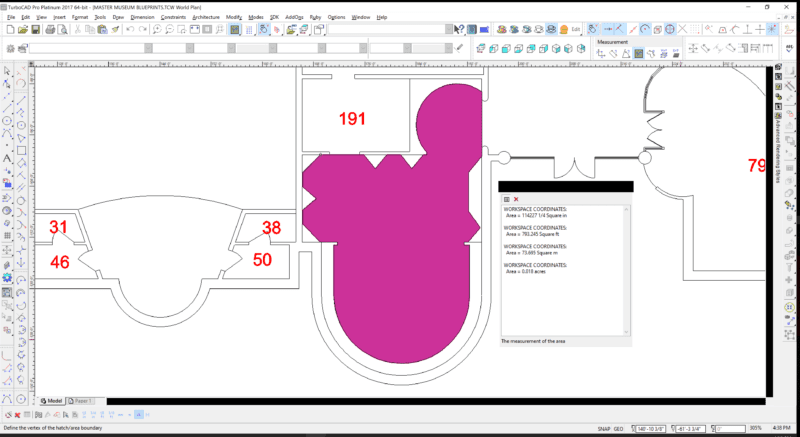
Our advice? If you’re a contractor (or aspire to be a contractor), learn these programs. Free apps such as Sketchup are helpful, but they are no substitute for an actual CAD program. If you do this for a living, CAD software quickly pays for itself—and then starts making you money. I took a class in AutoCAD at a local community college twenty years ago. It has been one of the most important classes I have ever taken in my life.
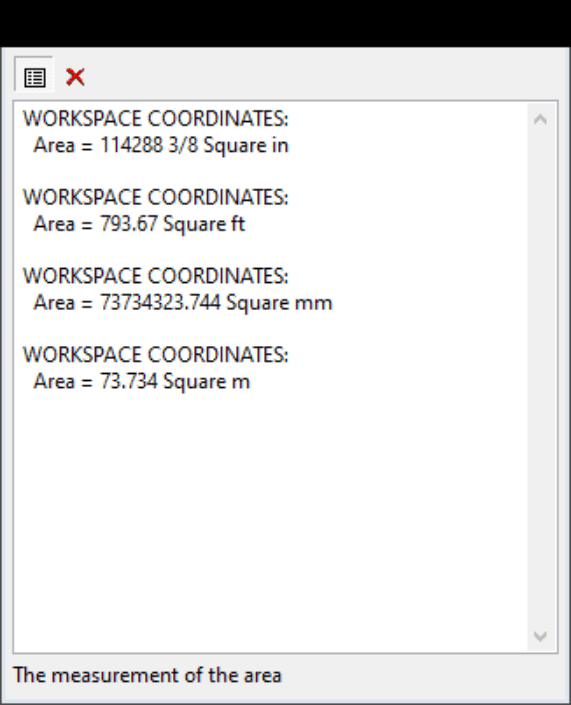
Summing Up How to Calculate Square Footage
Calculating square footage is usually straightforward if the room, wall, or space is rectangular. If the space is any other shape, it requires you to break the larger shape down into its smaller components. Calculate the square footage of each of these components separately then add them together to get the total. Sometimes you may even have to be creative and subtract the small component to get the total measurement.
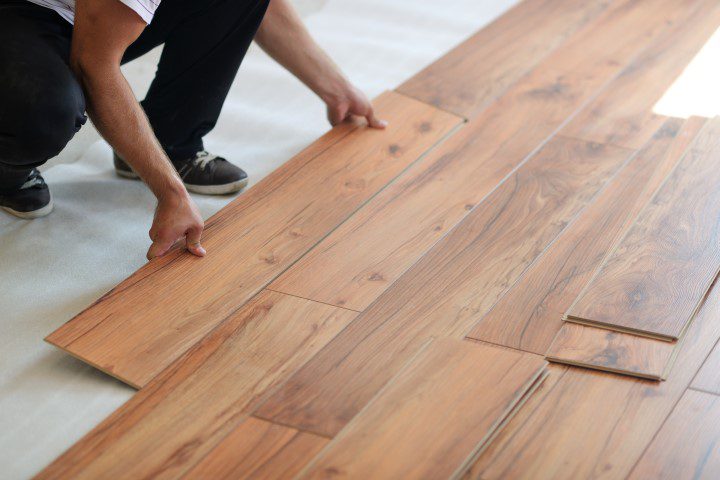
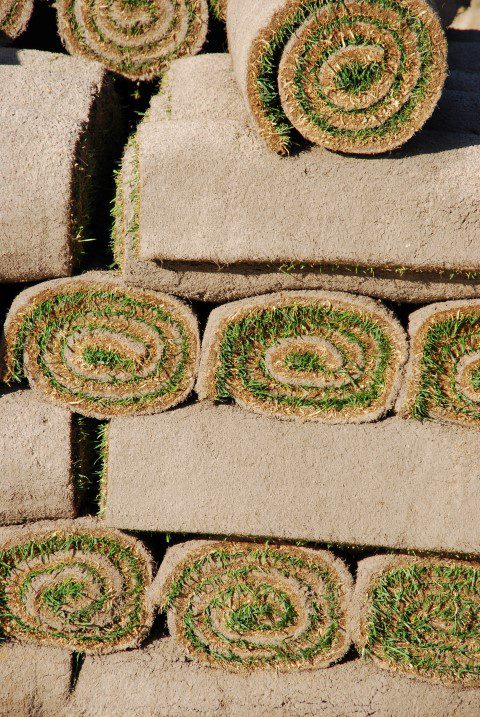
Always remember to keep your units the same—you can’t multiple feet x inches x yards. To simplify your life, grab a construction calculator. I always keep a construction calculator app on my phone, a pencil, paper, and tape measure in my truck just for these purposes. In the end, it will save you money.

